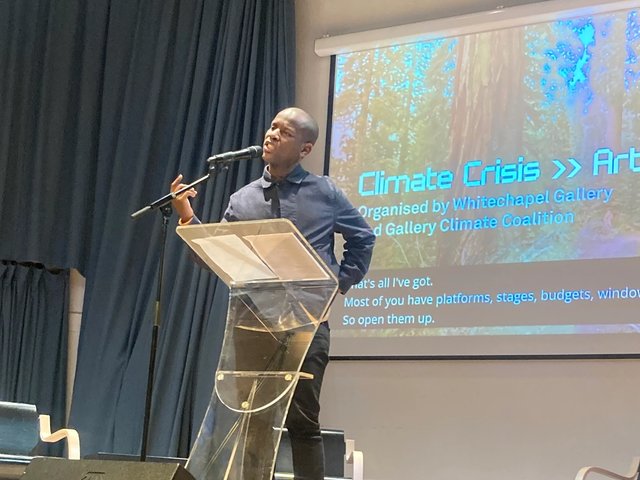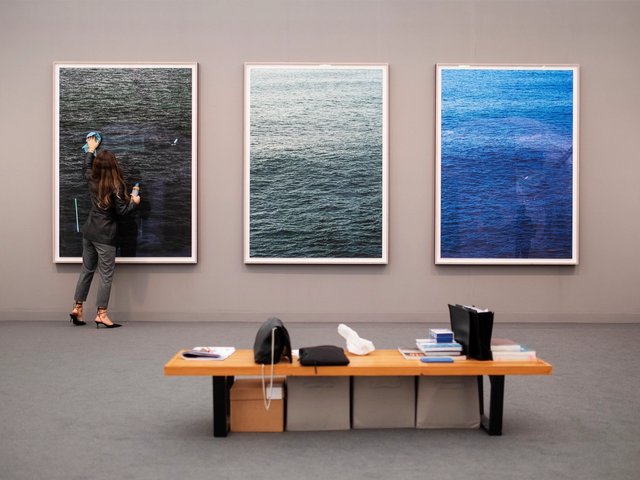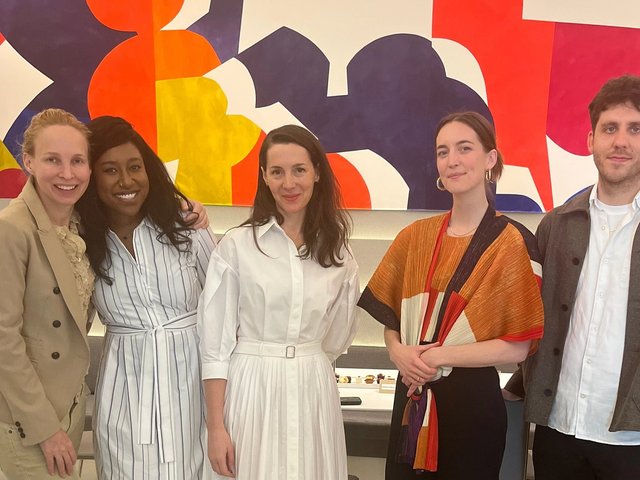Last year The Art Newspaper devoted its first Frieze London daily issue to environmental matters, in recognition of the climate emergency being “the most urgent issue of the 21st century”. Now sustainability has become a hot topic in the art world, spawning a plethora of talks, seminars and articles on the subject (including my monthly column, “Green is the New Black”). But while there is undoubtedly an abundance of awareness and concern, what is actually being done?
One practical initiative timed to coincide with Frieze is Barder Shuttle, a three-month collaboration between the artist and gallery material-sharing service Barder and the fine art shippers Queen’s. This waste-busting service enables anyone in central London who wants to borrow, lend or give away an item—whether a plinth, a vitrine, a crate or AV equipment—to order or advertise said item on the Barder website and then to have it picked up or delivered for free. Barder Shuttle runs until the end of the year and currently applies to London Zones 1-3, but if successful could be extended indefinitely and will hopefully inspire copycat schemes worldwide.
“The cost and effort required to move items from A to B is one of the biggest barriers to overcome when looking to donate and source pre-used exhibition materials,” says Mark Quail, the managing director of Queen’s. “With this initiative, we’re hoping to reduce the amount of these items going to landfill, as well as to encourage sharing and collaboration between London-based arts organisations—it’s another positive step towards tackling our industry’s carbon emissions.”
A key player in brokering this initiative is the Gallery Climate Coalition (GCC), the international charity devoted to facilitating a greener art world. GCC now has 850 members—including myself—across the globe from Berlin to Taiwan, all of whom have pledged to reduce their emissions by a minimum of 50% by 2030 in line with the Paris agreement and to achieve zero waste by the same date.
Action, not words
But how many are actually doing this? Some galleries, institutions and arts organisations have published their carbon audits on the GCC website and are following its Decarbonisation Action Plan. But many more have yet to offer any evidence that their membership commitments are being honoured. This month, to celebrate those who are backing their words with actions and to rally the rest, the GCC is unveiling a new Active Membership category to identify those who are pulling their environmental weight.
“We’re two years into the GCC project, but we’re also two years closer to our 2030 targets, so it’s more urgent than ever that we encourage effective action,” says GCC director Heath Lowndes. “It’s no good members just lingering on a list. We have to see that action is taking place, otherwise it just looks like greenwashing, which is bad for them and bad for us.”
To earn their Active Member designation GCC members have to fulfil a number of criteria, listed on the charity’s website. These include having completed an emissions report or carbon audit over the last two years and setting targets accordingly; establishing an in-house “green team”; and publishing an Environmental Responsibility Statement outlining their commitment to action.
Art fairs are often accused of being the largest waste generators of all, and GCC member Frieze will also need to earn its Active Member status. But according to Frieze chief operating officer Jon Ashman, it is already well on the way. “We are committed to minimising our environmental impact and, as founding members of the GCC, Frieze has put significant work into every aspect of our activities to ensure that we continue to make progress on our targets,” he says. Actions include introducing a 100% hybrid power model that replaces generators with batteries for power, setting up an internal sustainability working group across all parts of the Frieze organisation, and reusing all the gallery walls and shredding and recycling all carpet after each event. The London fairs have all been audited since 2018, and by 2023 all Frieze fairs will also be fully carbon audited. Now it’s up to the collectors to rein in the private jets and take the train.





